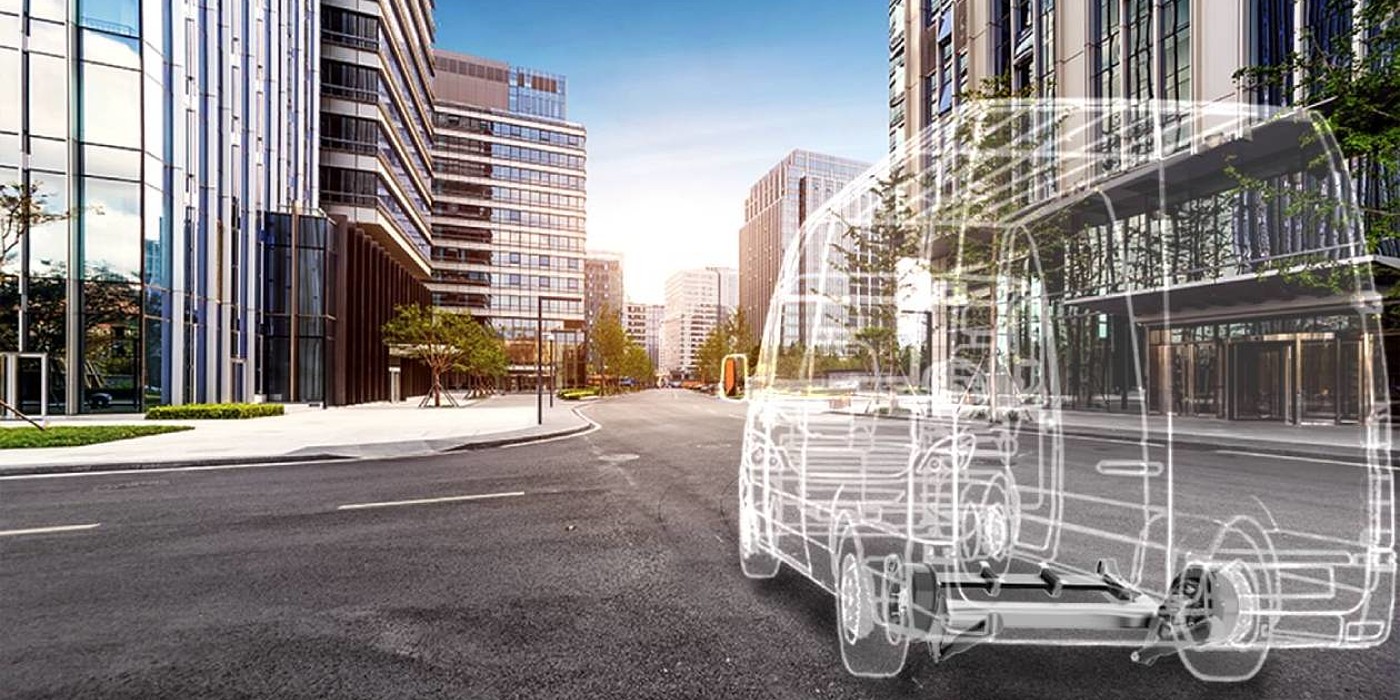New transverse leaf spring design EDaxle::LCV saves space, enhances driving safety and payload for everyday transport operations
The EDAG Group, the world's largest independent engineering service provider to the global automotive industry, has developed a new rear axle for light commercial vehicles (LCVs) that enhances driving safety and comfort. In the past, the solution of choice for suspensions for vans came in the shape of low-cost, sturdy rigid rear axles. However, rigid axles with longitudinal leaf springs increasingly fail to meet the handling and comfort requirements of current and future vehicle generations. The EDAG Group has therefore developed the semi-independent suspension with transverse leaf springs – EDaxle::LCV. This new design offers the semi-rigid axle a successful future. The innovative commercial vehicle rear axle resolves the conflicting aims of low cost and high driving dynamics potential. Both ride comfort and driving safety are improved. At the same time, the axle design remains simple – keeping price levels and installation space requirements low.
Lateral stability increased by 20 percent
Specifically the EDaxle::LCV improves lateral guidance and rigidity by around 20 percent compared with conventional rigid and semi-rigid axles. This substantially increases driving safety. Wheel location at the longitudinal swing arms, which are connected using a torsionally soft profile, also increases the longitudinal suspension travel. The customary S-sway with longitudinal leaf springs – the tendency of the axle design to rotate around itself – has been completely eliminated with the EDAG solution: The ride comfort is enhanced with both one-sided and with two-sided deflection. Together with the transverse leaf springs, which are integrated fully into the axle beam, this design also guarantees a low overall height. This in turn enables very low loading surfaces.
"Our semi-independent suspension uses very few components. That is one of the reasons why the price will remain comparable with conventional systems despite the many advantages," says Titus Meier-Kraut, Development and Test Engineer for Chassis/Drive Dynamics at the EDAG Group: "The maintenance requirements also remain low." Vehicle manufacturers benefit just as much as subsequent users from the low weight of the EDAG design: The axle concept is around 10 percent lighter than conventional rigid axles with steel longitudinal leaf springs. This can increase the payload accordingly or also reduce fuel consumption when the vehicle is unladen. In particular, the EDaxle::LCV can be scaled for various vehicle categories, axle loads, and track widths.
Lightweight construction meets electrification
The EDAG semi-independent suspension is ideal for future mobility requirements for many other reasons. The spring stroke ratio, for instance, is optionally adjustable. This keeps the ride height and the wheel spring rate constant regardless of the load. It also eliminates the need for complex, high-maintenance pneumatic spring systems. Numerous steel components in the axle can also be replaced with fiber composites. This reduces the weight of the axle further, making it around 6 kg lighter than the standard design. The developers from the EDAG Group have also prepared the axle for wheel hub motors: It can therefore be electrified simply with a space-saving design.
The advantage lies in the technical detail
The cross member mounted at the wheel center is another decisive advantage. Particularly with commercial vehicles with high axle loads this ensures very good support even under high lateral forces. The transverse leaf spring provides additional lateral support. It is connected to the trailing arms by means of asymmetrical elastomer bearings. It is also supported by the chassis. This double parallelogram ensures that the axle retains its tracking stability under the influence of lateral forces, and does not push the wheel into toe-out. With the currently specified bearings, the elastokinematic toe change gradient under the influence of lateral force is around 0.065 degrees per kilo newton (kN). The asymmetric elastomer bearings also ensure that the leaf springs can move freely during deflection while also providing good lateral force support.
Wide range of applications for different vehicle categories
At the present time, the axle is designed for a maximum axle load of two tons. It is therefore ideal for light commercial vehicles with up to 3.5 tons (4.25 t for battery electric vehicles) gross vehicle weight. Yet leisure activity vehicles and local delivery vans as well as motor homes and caravans also handle better with EDaxle::LCV. The EDaxle::LCV will make its premiere in the upgraded EDAG CityBot on the Deutsche Bank Park site in Frankfurt am Main in the second half of 2023. The EDAG Group patented the innovative EDaxle::LCV concept in Germany.
